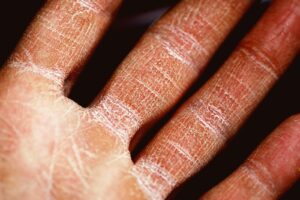Ad: How can architects play a role in managing indoor air pollution?
Sean Ng, a Product Design Engineer at Dyson provides insight into indoor air pollution and how it can be managed in a building
In recent years, we have become more aware of the impact of outdoor air pollution – not only from an environmental perspective, but also in terms of the effect it can have on our wellbeing. Further data published nationally, showing that virtually every home in the UK is subjected to air pollution above World Health Organization guidelines.[1]
But while we may be better versed about the high levels of polluted air we can be exposed to outdoors; how much do we know about the air we are breathing indoors?
Indoor air pollution often seems to go under the radar since it is invisible. This is surprising given that research shows people can spend up to 90% of their time indoors.[2] What’s more, according to the findings from a UK study, Indoor air quality can be up to 5 times worse than the air outdoors.[3]
Learning about indoor air pollution – Where does it come from?
Air pollution inside buildings can come from a range of sources; volatile organic compounds (VOCs), for example, can be emitted from building materials, cleaning products, and certain types of paint.
Formaldehyde, on the other hand, is a colourless gas pollutant, released by furniture and wooden products which use formaldehyde-based resins. This means it is commonly associated with new or refurbished buildings or furniture, and as it is 500 times smaller than 0.1 microns, it is particularly difficult to capture.[4] It can pollute continuously through off-gassing – a process where objects release particles that were previously trapped in a liquid or solid form – which may lead to increased exposure if uncaptured.
Understanding the impact – Why should we be concerned?
Research indicates that exposure to air pollution has various potential health effects, ranging from respiratory problems to skin irritation[5]. However, despite these potential risks, the influence of pollutants can be hard to detect as air pollution indoors can rarely be seen or felt.
While there are certain things people can do to minimise the impact of air pollution, professionals in charge of designing and running buildings must ensure that they are fit for purpose. This is also in the interests of those in the buildings professions too – BREEAM rewards projects that produce an Indoor Air Quality Plan (IAQP) which seeks to minimise sources of pollution and optimise indoor air quality.[6]
Considering the solutions – What can be done?
The most obvious solution is designing buildings to increase natural ventilation. However, if we depend entirely on natural conditions, we can never have total control over the ventilation rate in the building, which can lead to problems with indoor air quality or excessive heat gains and loss.
Having more windows to open in a building is also dependent on a good air quality outdoors. In busy areas, with pollutants from passing vehicles infiltrating the outside air, opening windows can create the reverse of the desired effect. What’s more, for the 49% of the UK’s population who suffer from hay fever symptoms, the pollen circulating in from outside can affect their performance.[7]
A mechanical ventilation system is often considered in addition to natural ventilation. While this may solve some of the problems identified above, built-in ventilation systems in spaces may not have adequate filtration systems, meaning that airborne pollutants are being blown around the room. As a result, we must consider how air purifiers can support in cleaning indoor air. The Dyson HEPA Cool Formaldehyde helps to capture 99.95% of particles as small as 0.1 microns from the air through its 360° HEPA H13 filter.[8] Thanks to the powerful circulation it generates, over 290 litres of purified air is projected throughout the room per second. This means that particles can be captured from the air rather than recirculated, which could benefit the wellbeing of the users.
Although there is not a universal solution to improving air purity indoors, new technologies like air purifiers can help reduce pollution levels and minimise their potential impact. When designing and building new commercial spaces, architects must consider the importance of clean air for occupants, and implement solutions to address this need.
[1] https://www.theguardian.com/environment/2022/apr/28/dirty-air-affects-97-of-uk-homes-data-shows
[2] EPA, The Inside Story: A Guide to Indoor Air Quality














Still better to eliminate as much air pollution as possible at source rather than having to reply on technology to live with it. At this rate we’ll end up wearing anti-pollution masks in the office, and at the shops and at school, purely on health grounds. Do we really want to go that way? Fine and ban the polluters. Use better equipment and building materials, things that don’t off-gas chemicals & dust. There’s no excuse anymore. Is real fresh air such a precious commodity now?